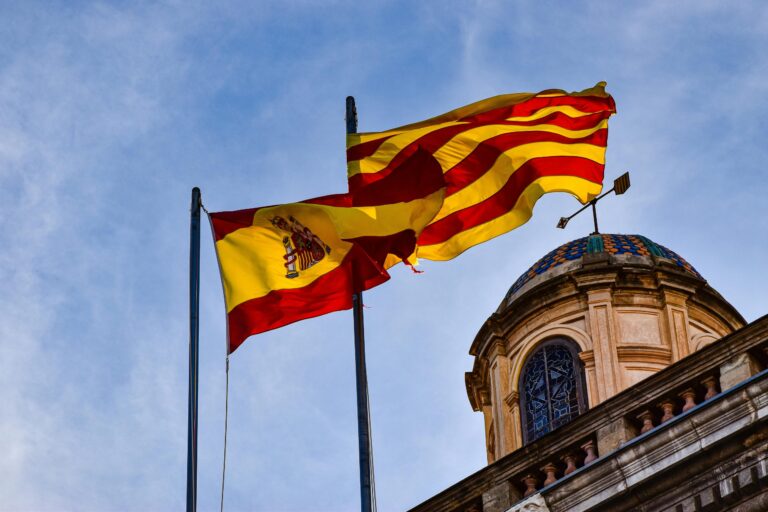Taxes in Peru: Which should I pay?
Discover how taxes work in Peru, the different types of levies, and which ones you'll be subject to if you live or run a business in the country.
If you’re planning to live for a while and start a business in this Latin American destination with high tourist and gastronomic appeal, then stay tuned because you need to know, with the help of Holafly offering monthly subscription plans globally, all about the taxes in Peru.
Discover the wide list of taxes that finance both public services and the development of this wonderful country, globally recognised for its diversity and Incan culture. Avoid surprises and get to know the fiscal responsibilities you’ll be subject to based on your category. Grab a pen and paper to start calculating, simply, your taxes in soles.
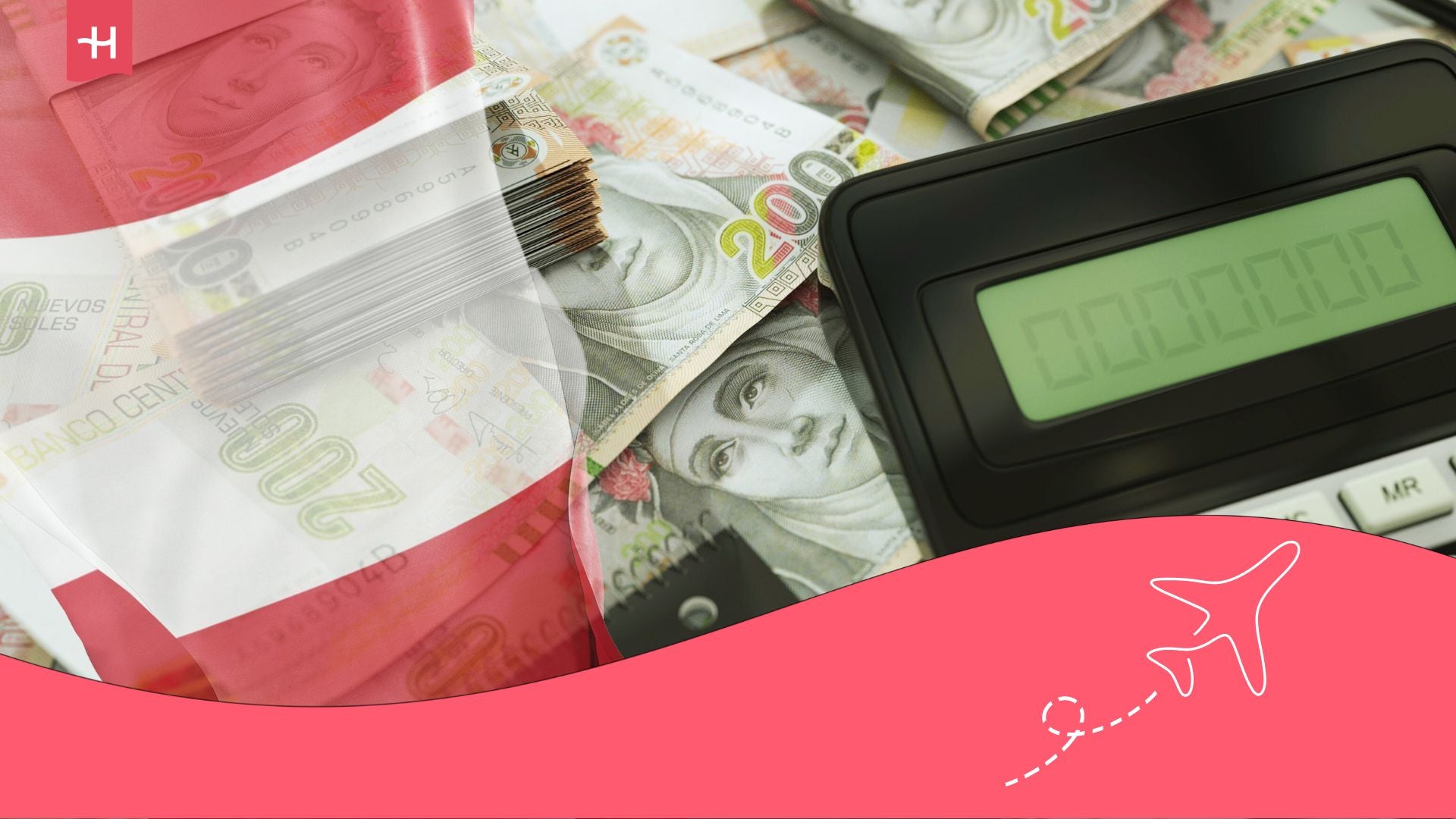
How do taxes work in Peru?
The tax system in Peru is progressive and designed to collect taxes both at the national and local levels. Taxes are divided into direct and indirect taxes, with the Income Tax (IR) and the General Sales Tax (IGV) being the most important.
The national currency of Peru is the sol, and currently, the Tax Unit (UIT) is set at $1,410 (€1,300). The main bodies responsible for regulating and supervising taxes are the National Superintendency of Customs and Tax Administration (SUNAT), which handles tax administration and supervision, and the Ministry of Economy and Finance (MEF), which designs fiscal policies. This system aims to ensure efficient collection of funds for the country’s economic and social development.
Taxes in Peru for Individuals
1. Income Tax (IR)
The Income Tax applies to the income earned by individuals from various sources. It is classified into categories based on the source of income, each with specific rates and characteristics. Let’s get to know them all:
Income categories
- First category: Includes income from renting or transferring movable and immovable property. The rate is 6.25% of net income, which is equivalent to 5% of gross income.
- Second category: Applies to income from sale of shares, interest from deposits, royalties, and others. The rate is 6.25% on net income.
- Fourth category: Applies to income from self-employed workers, such as professionals and technicians who issue fee receipts. They are subject to an 8% withholding on the receipt amount. The first $9,870 (€9,100) per year (equivalent to 7 UIT) are exempt from the tax.
- Fifth category: Refers to income from employees (on payroll). Annual income exceeding $9,870 (€9,100) is subject to cumulative progressive rates:
- Up to 5 additional UIT: 8 %.
- More than 5 UIT and up to 20 additional UIT: 14 %.
- More than 20 UIT and up to 35 additional UIT: 17 %.
- More than 35 UIT and up to 45 additional UIT: 20 %.
- More than 45 UIT: 30 %.
- Annual income of the worker: The worker earns $15,800 (€14,600) per year.
- Exempt amount from taxes: The first 7 UIT are tax-free. In 2025, the value of UIT is $1,410 (€1,300), so the exempt amount is: 7 x 5,350 = $10,115 (€9,363).
- Taxable income (after exemption): Subtract the exempt amount from the annual income: $16,200 – $10,115 = $6,087 (€14,550 – €9,363 = €5,637). This is the amount on which taxes will be applied.
- Tax rate: According to the progressive rate table, the up to 5 additional UIT ($7,215) (€6,688) pays a tax of 8%. Since the taxable amount ($6,087) is within this range, it is multiplied by 8%: $6,087 x 0.08 = $487 (€5,637 x 0.08 = €451).
- Tax to pay: The worker must pay $487 (€451) in Income Tax by the end of the year.
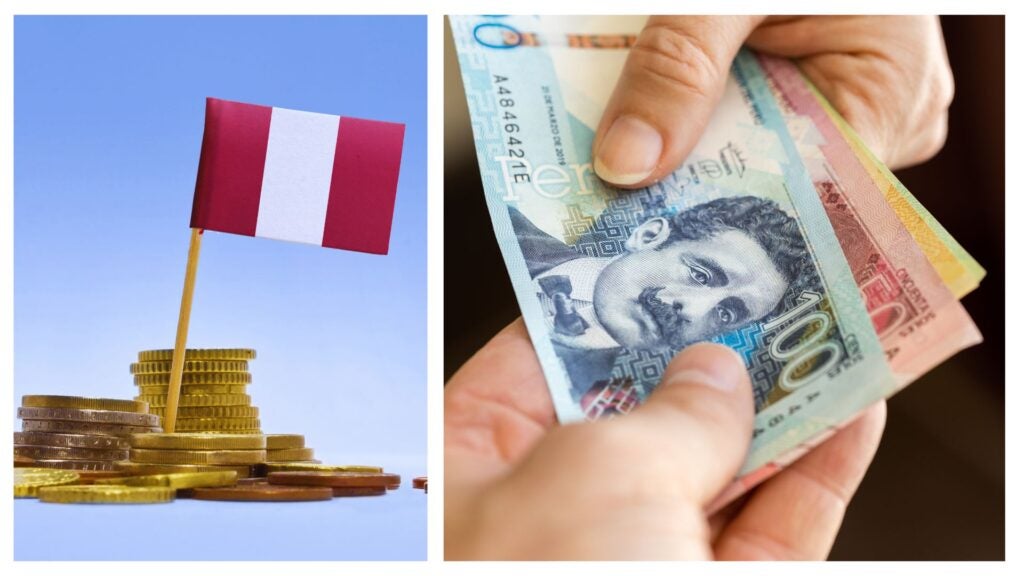
2. General Sales Tax (IGV)
IGV is an indirect tax applied to the sale of goods and services, as well as to the importation of goods. The general rate is 18%, which includes 2% for the Municipal Promotion Tax.
Suppose you buy a product with a base price of $26.30 (€24.40), the IGV would be:
- IGV: $27 x 18% = $4.86 (€4.40).
- Total price to pay: $27 + $4.86 = $31.86 (€28.40).
3. Selective Consumption Tax (ISC)
ISC is a tax that applies to the sale or importation of certain products considered harmful to health or luxury goods, such as fuels, alcoholic beverages, cigarettes, and vehicles. Rates vary depending on the product and can be specific (fixed amount per unit) or ad valorem (percentage of the sale price).
For example, for alcoholic beverages, the ad valorem rate can be 25% of the public sale price.
4. Property Tax
This tax applies to the ownership of real estate (houses, apartments, land) and is paid annually to the municipality where the property is located. The rates are progressive and cumulative based on the property value:
- Up to 15 UIT: 0.2 %.
- More than 15 UIT and up to 60 UIT: 0.6 %.
- More than 60 UIT: 1.0 %.
That is, if you have a property valued at $105,200 (€97,500):
- Value in UIT: $10,800 / $1,450 = 7.45 UIT (€9,700 / €1,300 = 7.45 UIT).
- Tax calculation:
- Up to 15 UIT: 15 x $1,450 x 0.2% = $435 (€390)
- More than 15 UIT and up to 60 UIT: 45 x $1,450 x 0.6% = $1,944 (€1,734)
- More than 60 UIT: 17.67 x $1,450 x 1.0% = $256.87 (€228)
- Total tax to pay: $435 + $1,944 + $256.87 = $2,635.87 (€390 + €1,734 + €228 = €2,352)
5. Transfer Tax (Alcabala)
The Transfer Tax (Alcabala) is a tax applied in Peru to the transfer of real estate, either urban or rural, whether for sale or donation. This tax is the exclusive responsibility of the buyer or acquirer of the property.
Main features of the Transfer Tax:
- Tax base: Calculated on the transfer value of the property, which cannot be lower than the self-assessment value for the year in which the transfer takes place.
- Applicable rate: The tax rate is 3% on the tax base. However, the first 10 Tax Units (UIT) of the property value are exempt from payment. For 2025, one UIT is set at $1,410 (€1,300), so the first $14,100 (€13,000) of the property value are not subject to the tax.
Suppose the purchase of a property is valued at $52,600 (€48,800) in 2025:
- Exempt amount: The first 10 UIT of the property value are tax-exempt. Since the UIT in 2025 is $1,450 (€1,300), the exempt amount is: 10 x $1,450 = $14,500 (€13,000).
- Taxable value (subject to taxes): Subtract the exempt amount from the total property value: $38,000 – $14,500 = $23,500 (€34,000 – €13,000 = €21,000). This is the value that will be taxed.
- Tax calculation: This taxable amount is subject to a 3% tax rate: $23,500 x 0.03 = $705 (€21,000 x 0.03 = €630).
Payment and formalisation
The buyer must pay the Transfer Tax to the municipality where the property is located. This payment is an essential requirement to formalise the property transfer through a public deed and its subsequent registration in the public records.
Exemptions
Exempt from paying the Transfer Tax are transfers between spouses, between parents and children, and those made in favour of state entities, among other exemptions specified by the current legislation.
Taxes in Peru for Businesses or Companies

1. Income Tax (IR)
The Income Tax applies to net profits earned by companies during a fiscal year. The general rate is 29.5% on taxable net income. However, there are special regimes for small and medium-sized enterprises (SMEs) that offer reduced rates.
For example, if a company has taxable net income of $131,600 (€122,000), the tax payable would be: $500,000 x 29.5% = $147,500 (€500,000 x 29.5% = €147,500).
2. General Sales Tax (IGV)
The IGV refers to taxes on the sale of goods and services within the national territory. The general rate is 18%, which consists of 16% IGV and 2% Municipal Promotion Tax. Companies act as withholding agents for this tax, transferring the collected amount to the National Superintendency of Customs and Tax Administration (SUNAT).
Important: If you are a frequent traveler and want to stay connected without worrying about expensive roaming or looking for a new SIM at every destination, Holafly’s subscription plans are for you. With a single eSIM, enjoy internet in more than 160 countries for a fixed price and no surprises on your bill. Travel without limits and connect easily and securely! 🚀🌍

3. Selective Consumption Tax (ISC)
The ISC applies to the sale of certain goods considered selective, such as fuels, alcohol, tobacco, and other specific products. The tax rate varies depending on the product category and can either be specific (fixed amount per unit) or ad valorem (percentage of the sale price).
That said, imagine you’re an entrepreneur selling alcoholic beverages, with an ad valorem rate of 25% and a sale price of $21 (€19.50):
- ISC: $22 x 25% = $5.50 (€5.00).
- Total sale price: $22 + $5.50 = $27.50 (€25.00).
4. Financial Transactions Tax (ITF)
The ITF taxes financial transactions made through the banking system. The rate is 0.005% of the transaction amount. This tax aims to formalise the economy and control money laundering.
So, if a company makes a bank transfer of $13,160 (€12,200), the ITF would be: $50,000 x 0.005% = $2.50 (€50,000 x 0.005% = €2.50).
5. Temporary Tax on Net Assets (ITAN)
The ITAN is a tax applied to companies with net assets greater than $263,000 (€244,000). The rate is 0.4% of the net asset value and is paid annually. This tax is deductible from the Income Tax.
If a company has net assets of $540,000 (€480,000), the final ITAN calculation and payment would be as follows: $540,000 x 0.4% = $2,160 (€480,000 x 0.4% = €1,920).
Tax Comparison in Peru: Individual vs Business
Taxes in Peru are diverse, just like their tax rates. It’s important to clarify which category you fall into as a taxpayer, whether as an individual or a business, to understand the taxes and rates you’ll be subject to in Peru. Here’s a summary of everything mentioned above:
| Tax | Individuals | Companies |
| Income Tax (IR) | Category 1: 5% on rental income from movable and immovable property.Category 2: Work (fourth and fifth category): Progressive cumulative rates of 8%, 14%, 17%, 20%, and 30%, based on annual income. | Category 3: 29.5% on net business income. MYPE Tax Regime: – Up to 15 UIT of profit: 10%. – More than 15 UIT of profit: 29.5%. Special Income Regime (RER): 1.5% of monthly net income. |
| General Sales Tax (IGV) | – Generally not directly applicable, but they bear the 18% on goods and services purchased. | – 18% on sales of goods and services. |
| Selective Consumption Tax (ISC) | – Not directly applicable, but they bear the tax on the purchase of specific goods like fuels, alcoholic beverages, cigarettes, etc. | – Applies to the production and importation of specific goods and certain services, with variable rates depending on the product or service. |
| Property Tax | – Applies to property owners, with rates ranging from 0.2% to 1% of the property’s value. | – Applies to companies owning property, under the same rates as individuals. |
| Transfer Tax (Alcabala) | – 3% on the property transfer value, paid by the buyer. | – 3% on the property transfer value, paid by the purchasing company. |
| Temporary Tax on Net Assets (ITAN) | – Not applicable. | 0.4% on net assets exceeding $263,000 (€244,000), applicable to companies under the General Regime. |
Are there any tax benefits in Peru?

To encourage the return of Peruvian citizens residing abroad and boost national investment and economic growth, the government has implemented certain tax incentives and benefits for both Peruvians and foreigners wishing to settle in the country.
Law of Economic and Social Reinsertion for Returning Migrants
This law allows Peruvians who have lived abroad for at least three years to return to the country with tax benefits, such as exemption from customs duties on the entry of their personal and capital goods.
Benefits:
- One-time exemption from the payment of all taxes levied on the importation of personal property, household goods, tools, equipment, etc., up to a value of 30,000 dollars.
- Facilities for the establishment of businesses or ventures in the country.
Incentives for Business Investment
The Peruvian government offers various incentives to attract foreign investment and promote business creation in the country, such as:
- Special regimes: Reduced Income Tax rates for micro and small businesses (MYPE) that opt for the MYPE Tax Regime.
- Special economic zones: Geographical areas with tax and customs benefits for companies that set up and operate in them, promoting regional development.
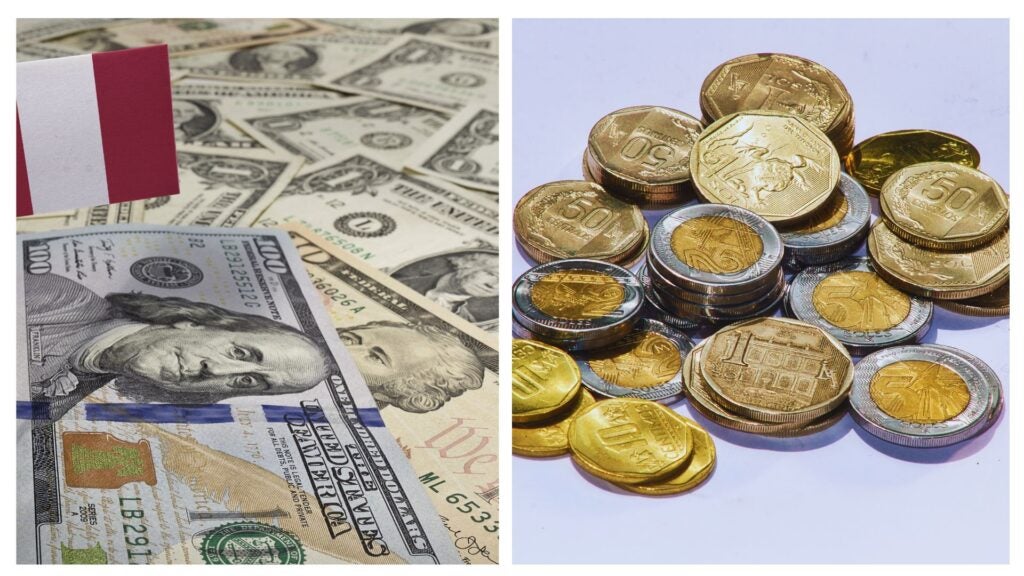
Frequently Asked Questions about Taxes in Peru
As a resident, you are subject to the Income Tax on your global income and other taxes such as the IGV on goods and services acquired locally. Additionally, if you own real estate, you must pay the Property Tax.
Tourists are not subject to income taxes, but they must pay the IGV of 18% on goods and services. Some products may include the ISC if they are selective, such as alcoholic beverages or fuels.
In Peru, certain registered businesses offer IGV refunds to foreign tourists on the purchase of goods that will be taken outside the country. This applies to specific products, and you must present your passport and payment receipts.
The General Regime applies to large companies, with a rate of 29.5% on net income. The Special Income Regime (RER) is designed for small businesses with lower income and lower rates (1.5% of monthly net income).
Failing to file taxes can result in fines, overdue interest, and other administrative sanctions. The SUNAT is strict in controlling tax compliance.
Taxes can be paid through the SUNAT website, authorised banks, or mobile applications. Businesses and individuals must register in the tax system to make their declarations and payments.














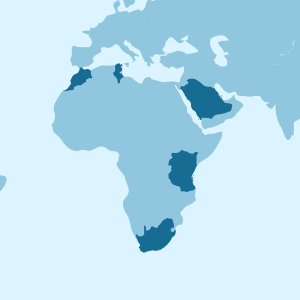























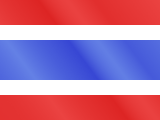







 Pay
Pay  Language
Language  Currency
Currency 


















 No results found
No results found





